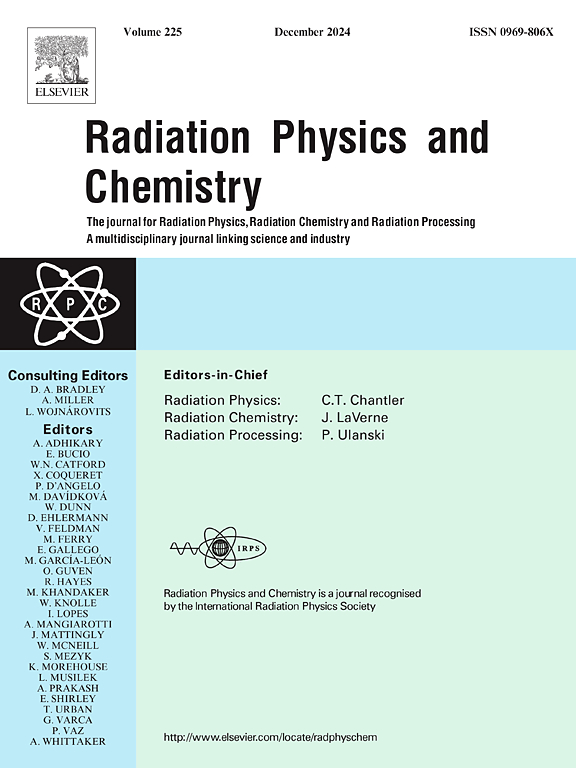Radiometric and simulation analysis with MCNP 6.3 of products that expose the skin by absorption
IF 2.8
3区 物理与天体物理
Q3 CHEMISTRY, PHYSICAL
引用次数: 0
Abstract
This study focuses on the evaluation of the natural radioactivity levels of 226Ra, 232Th, and 40K in 51 samples of various types of cleaning materials, cosmetics, and daily care products that are available in the markets of the State of Rio de Janeiro (Brazil). The specific activities, the radium equivalent concentration, and the annual effective doses to the skin were determined using the gamma spectroscopy method and a High Purity Germanium detector. Using the Monte Carlo method (MCNP 6.3), the cosmetic Henna radioactive products were simulated with the reference phantom, and the organ doses were calculated with the usage scenario. The mean values of activity concentrations were 4.49 ± 1.25, 3.82 ± 0.44, 38.75 ± 8.70, and 12.94 ± 2.56 Bq kg−1 for 226Ra, 232Th, 40K, and Raeq, respectively. Meanwhile, the effective skin dose ranged from (0.74 ± 0.16 to 94.2 ± 24.9) μSv y−1, with an average value of 7.49 ± 1.39 μSv y−1, below the limit value of 1 mSv y−1. The average annual effective skin dose values simulated by MCNP 6.3 for the arm and head regions exposed to the Henna cosmetic were 1.1 ± 0.1 and 1.9 ± 0.2 μSv y−1, respectively. However, the value found in this present work was 2.0 ± 0.1 μSv y−1, a percentage difference of 5.26 %. According to the regulation in CNEN 3.01 NN of 2024, the results indicated that the products studied do not significantly harm consumers' health in a radiological sense.
求助全文
约1分钟内获得全文
求助全文
来源期刊

Radiation Physics and Chemistry
化学-核科学技术
CiteScore
5.60
自引率
17.20%
发文量
574
审稿时长
12 weeks
期刊介绍:
Radiation Physics and Chemistry is a multidisciplinary journal that provides a medium for publication of substantial and original papers, reviews, and short communications which focus on research and developments involving ionizing radiation in radiation physics, radiation chemistry and radiation processing.
The journal aims to publish papers with significance to an international audience, containing substantial novelty and scientific impact. The Editors reserve the rights to reject, with or without external review, papers that do not meet these criteria. This could include papers that are very similar to previous publications, only with changed target substrates, employed materials, analyzed sites and experimental methods, report results without presenting new insights and/or hypothesis testing, or do not focus on the radiation effects.
 求助内容:
求助内容: 应助结果提醒方式:
应助结果提醒方式:


